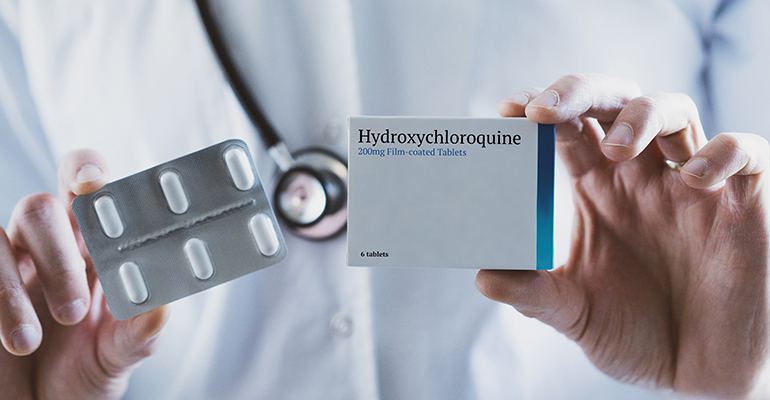Indian hydroxychloroquine and paracetamol exports decided on case-by-case basis, says Pharmexcil

Importing countries’ embassies are being asked to submit detailed requests for the key medicines amid COVID-19 pandemic
The Indian government is deciding whether to allow pharmaceutical exports of hydroxychloroquine and paracetamol on a case-by-case basis and only after importing countries submit a detailed request specifying why they need the medicines, according to Pharmexcil, a pharmaceutical export promotion council set up by India’s trade ministry.
The ongoing coronavirus pandemic has heaped strain on global pharma supply chains and prompted some governments to assess their medicines supply chains and prioritise domestic supply over exports.
Last week, India’s Ministry of External Affairs relaxed an export ban on anti-malarial drug hydroxychloroquine just 24 hours after a telephone conversation between US President Donald Trump and Indian Prime Minister Narendra Modi.
The drug has been promoted as a potential therapy for COVID-19 – including by Trump himself -- but has yet to be approved by any regulator for the indication.
The MEA also said India would be supplying over-the-counter painkiller paracetamol and hydroxychloroquine to neighbouring countries dependent on its medicines supply.
In a letter to members dated April 15, Pharmexcil Director General, Udaya Bhaskar, said the council had contacted the Indian Directorate General of Foreign Trade (DGFT) asking it to issue guidelines to the pharmaceutical industry on the formal procedure for securing permission to export hydroxychloroquine and paracetamol.
He said the council had learned details of the necessary procedure from two members who had recently shipped quantities of hydroxychloroquine and paracetamol to the US and the UK.
“It is learnt that the requests received by the Ministry of External Affairs…from the embassy, health ministry or other government officials of the importing countries for the supply of these drugs would be examined on case to case by concerned departments and accordingly, the consignments may be released for export,” Bhaskar wrote.
He added that partner companies of importing countries should ask their respective embassies to send a detailed representation to the MEA “specifying the need of country for these medicines, quantity required, details of Indian manufacturer/exporter as well as the details of importers.”
Exporters are also required to complete a DGFT pro forma document listing details of shipment including the purpose of shipment, loading and discharge ports, final destination and buyer/consignee details.
Requests received by the MEA will be assessed by the Department of Pharmaceuticals and Drugs Control General of India and only after clearance from these departments, permission to export will be granted, according to the Pharmexcil letter.
Earlier in April, the DGFT lifted export restrictions on twelve active pharmaceutical ingredients and their associated finished products with immediate effect. The temporary restrictions were imposed on March 3 to ensure domestic supply amid slowing imports from China, a key producer of the ingredients.
The list of products freed from export restrictions included antibiotics clindamycin and erythromycin, anti-infective tinidazole and some vitamins but hydroxychloroquine and paracetamol were notable omissions.
Related News
-
News Patients vs Pharma – who will the Inflation Reduction Act affect the most?
The Inflation Reduction Act brought in by the Biden administration in 2022 aims to give better and more equitable access to healthcare in the USA. However, pharma companies are now concerned about the other potential costs of such legislation. -
News CPHI Podcast Series: What does the changing US Pharma market mean for industry and patients alike?
In this week's episode of the CPHI Podcast Series Lucy Chard, Digital Editor for CPHI Online is joined by James Manser to discuss the political and market changes in the US pharma field. -
News CPHI Barcelona Annual Report illuminates industry trends for 2024
The CPHI Annual Survey comes into it’s 7th year to report on the predicted trends for 2024. Over 250 pharma executives were asked 35 questions, with their answers informing the industry landscape for the next year, spanning all major pharma marke... -
News Which 10 drugs are open to price negotiation with Medicare in the USA?
The Centres for Medicare & Medicaid Services, under the Biden administration in the USA, has released a list of the 10 drugs that will be open to price negotiations as part of the new legislation under the Inflation Reduction Act (IRA). -
News EU Medical Devices Regulation causes unintended disappearances of medical devices for children, doctors state
Doctor groups and associations have appealed to the EU to correct the EU Medical Devices Regulation law that may cause unintended shortages of essential drug and medical devices for children and rare disease patients. -
News 10 Major Drug Approvals So Far in 2023
Last year, 37 novel drugs were approved by the FDA, this was a high number for such a category, and covered many fields including oncology, demonstrating how promising further research is, and how it is only continuing to build. To date, there are alre... -
News Detecting Alzheimer's disease with a simple lateral flow test
A novel rapid diagnostic test for early-stage Alzheimer's disease has been developed using a biomarker binder from Aptamer Group along with technology from Neuro-Bio, the neurodegenerative disease experts. -
News CPHI Podcast Series: outsourcing and manufacturing trends
Listen to the CPHI Podcast Series this June to hear Gil Roth of the PBOA speak with Digital Editor Lucy Chard about the biggest trends and topics to watch in pharma outsourcing and manufacturing at the minute.
Position your company at the heart of the global Pharma industry with a CPHI Online membership
-
Your products and solutions visible to thousands of visitors within the largest Pharma marketplace
-
Generate high-quality, engaged leads for your business, all year round
-
Promote your business as the industry’s thought-leader by hosting your reports, brochures and videos within your profile
-
Your company’s profile boosted at all participating CPHI events
-
An easy-to-use platform with a detailed dashboard showing your leads and performance







